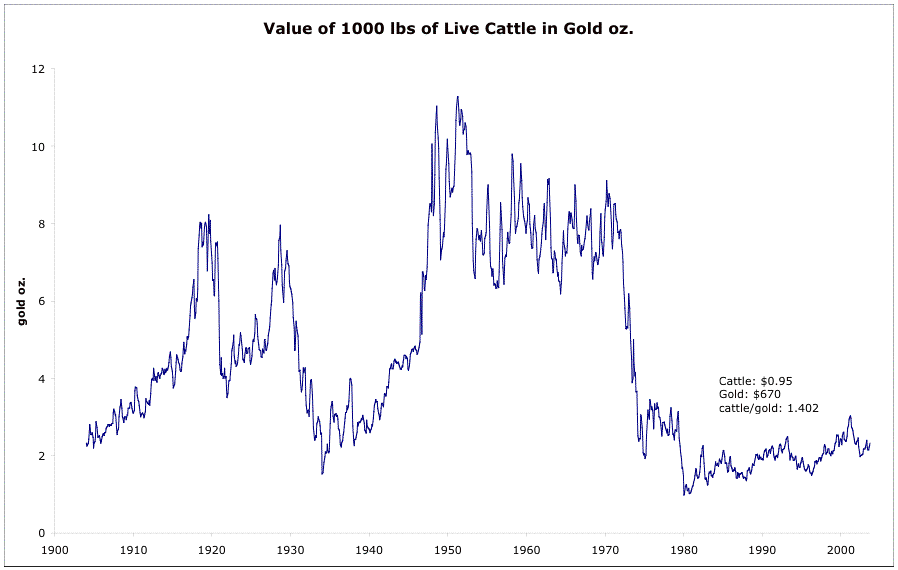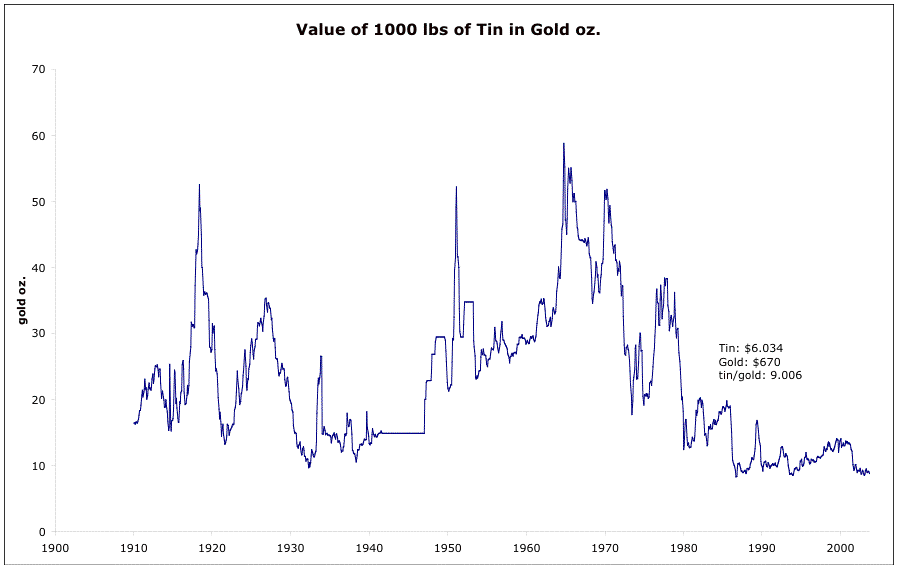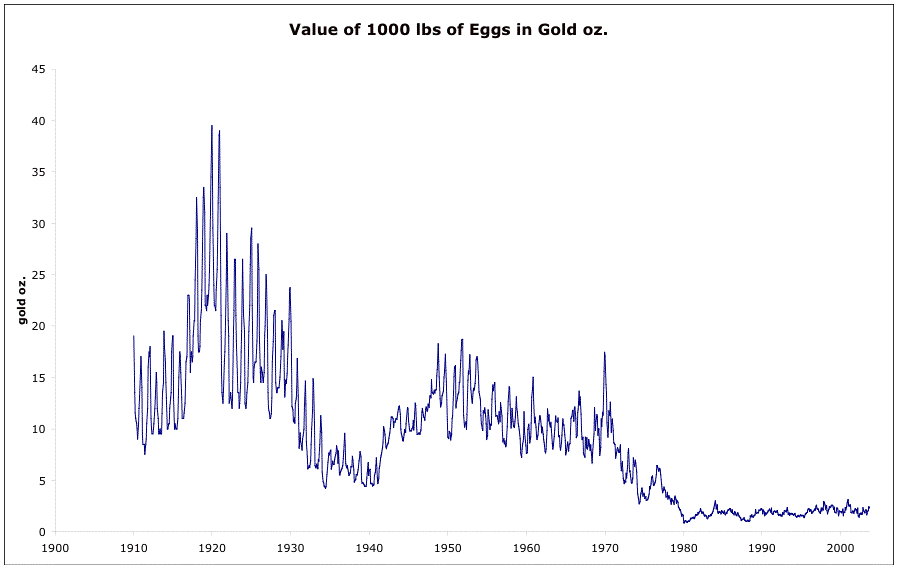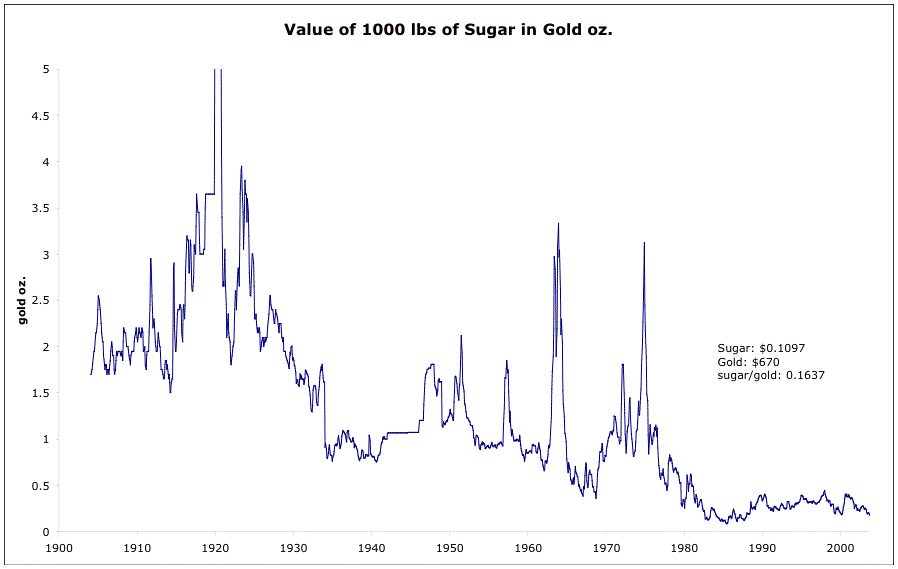The Real Prices of Commodities 3: Bits n Pieces
February 24, 2007
OK, this is the last of this series for now. The basic message is the same, but I am continually fascinated by the amazing decline in commodity values during the 20th century. Once again these charts only go to the end of 2003 but I give updated prices in text. If you look at the most recent price (in terms of gold) it is usually in the range of where it was in the 1990s — ie there hasn’t really been much of a commodities boom in gold terms. I think commodities could rise in real values going forward (ie in terms of gold), because all I see everywhere is a) more people wanting them, b) the capacity to produce them declining, mostly due to natural resource depletion of one sort or another. However, especially in the softs, there has been a quality effect. The grain or beef of the 1910s or even the 1950s would be considered “organic” today and get maybe 2x the price.

Meat is cheap these days because farmers have been culling their herds, which means they’ve been reducing their herd sizes by sending more cattle to market. The combination of drought and high feed (grains) prices has made the business unprofitable. Let me say that again: higher production costs has led to lower prices due to an increase in supply. That is not a situation that will last, because the next step is lower supply (smaller herds) and higher selling prices (to regain a margin with higher production costs). Meat prices are headed higher, and I think we could see a doubling here over the next 12 months or so.

Tin is still cheap. I’ve heard that tin supplies are pretty tight these days, maybe because of the conversion of the electronics industry toward lead-free solder. When you throw all those gadgets away you get a bunch of lead in the garbage dump. Solder was traditionally about 70% lead and 30% tin, and the lead-free solders are almost 100% tin.

I don’t have a recent price for eggs. Another collapsing soft commodity values story, although again today’s “organic, free range” eggs, which get 2x or 3x the price of the low-grade stuff, are comparable to “regular” eggs of the 1950s or 1910s. Lots of seasonality with this one, which seems odd since chickens lay year-round.

Sugar has a tendency to be a speculator’s plaything, which we see goes back all the way to the 1910s. Very spikey. Despite recent demand for sugar for sugar ethanol, the stuff is still cheap. To get back to the 1950s-1960s sugar values of about 1 oz. gold for 1000 lbs of sugar, we would have to go up about 6x vs gold. If gold goes up 2x during that period, sugar would go up 12x in nominal dollar prices. If sugar’s spikey history continues and we get a blowoff to 2 oz. of gold/1000lbs as was the case in the early 1970s, we might see a 24x rise in sugar. Anyway, lots of upside and fun for traders with virtually no downside here.

